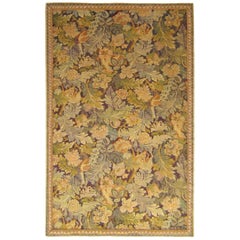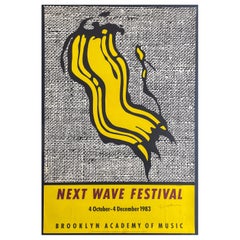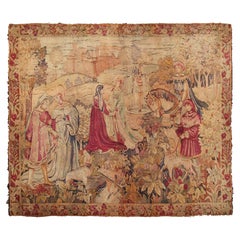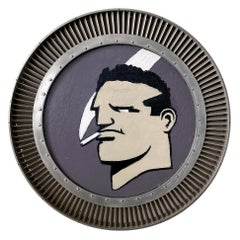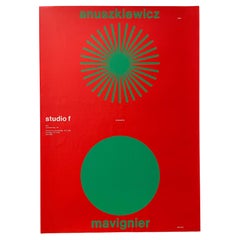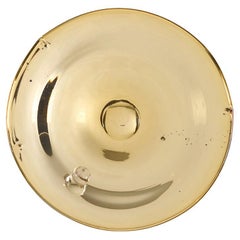Manhattan - Wall Decorations
Early 20th Century English Art Deco Manhattan - Wall Decorations
Wool
1980s American Modern Vintage Manhattan - Wall Decorations
Paper
1920s French Baroque Vintage Manhattan - Wall Decorations
Wool
2010s American Machine Age Manhattan - Wall Decorations
Aluminum
1960s German Minimalist Vintage Manhattan - Wall Decorations
Metal
2010s French Manhattan - Wall Decorations
Glass
Late 19th Century French Art Nouveau Antique Manhattan - Wall Decorations
Paper
2010s American Modern Manhattan - Wall Decorations
Paper
1950s Ecuadorean Baroque Vintage Manhattan - Wall Decorations
Wool
1970s American Modern Vintage Manhattan - Wall Decorations
Canvas, Acrylic
18th Century English Aubusson Antique Manhattan - Wall Decorations
Tapestry, Wool, Silk
2010s American Modern Manhattan - Wall Decorations
Paper
1920s Italian Vintage Manhattan - Wall Decorations
Canvas
18th Century Indian Anglo-Indian Antique Manhattan - Wall Decorations
Paper
Late 17th Century French Aubusson Antique Manhattan - Wall Decorations
Wool
Mid-20th Century Swedish Mid-Century Modern Manhattan - Wall Decorations
Paper
1980s American Mid-Century Modern Vintage Manhattan - Wall Decorations
Paper
Late 20th Century French Modern Manhattan - Wall Decorations
Tapestry, Wool
Early 20th Century French Rococo Manhattan - Wall Decorations
Porcelain
1890s French Antique Manhattan - Wall Decorations
Wool
Early 20th Century Persian Empire Manhattan - Wall Decorations
Wool
1920s Persian Vintage Manhattan - Wall Decorations
Wool
Mid-19th Century Asian Vienna Secession Antique Manhattan - Wall Decorations
Wool
Early 20th Century French Art Deco Manhattan - Wall Decorations
Wool
Mid-20th Century European Neoclassical Manhattan - Wall Decorations
Brass, Gold
Late 19th Century Romantic Antique Manhattan - Wall Decorations
Wool
18th Century French Aubusson Antique Manhattan - Wall Decorations
Wool, Silk, Tapestry
17th Century Belgian Antique Manhattan - Wall Decorations
Wool
Mid-20th Century French Mid-Century Modern Manhattan - Wall Decorations
Wool, Tapestry
2010s American Modern Manhattan - Wall Decorations
Paper
Early 20th Century Persian Tabriz Manhattan - Wall Decorations
Wool
20th Century French Mid-Century Modern Manhattan - Wall Decorations
Paper
Late 20th Century American Art Deco Manhattan - Wall Decorations
Paper
20th Century North American Manhattan - Wall Decorations
Wood
1960s French Modern Vintage Manhattan - Wall Decorations
Wool
17th Century European Antique Manhattan - Wall Decorations
Wool
1980s Art Nouveau Vintage Manhattan - Wall Decorations
Paper
Early 2000s American Other Manhattan - Wall Decorations
Canvas, Acrylic
1970s Italian Brutalist Vintage Manhattan - Wall Decorations
Aluminum
Early 17th Century Belgian Antique Manhattan - Wall Decorations
Wool, Silk
1960s American Mid-Century Modern Vintage Manhattan - Wall Decorations
Bronze, Enamel, Pewter
1970s American Mid-Century Modern Vintage Manhattan - Wall Decorations
1980s American Modern Vintage Manhattan - Wall Decorations
Gold Leaf
Early 2000s American Manhattan - Wall Decorations
Wood, Paper
Late 20th Century Bohemian Manhattan - Wall Decorations
Wool
1920s French Art Deco Vintage Manhattan - Wall Decorations
Silver, Copper
20th Century Japanese Manhattan - Wall Decorations
Brass
1920s Swedish Scandinavian Modern Vintage Manhattan - Wall Decorations
Linen
1890s French Antique Manhattan - Wall Decorations
Wool
18th Century French Antique Manhattan - Wall Decorations
Wool
1990s English Manhattan - Wall Decorations
Fabric
Early 20th Century Danish Manhattan - Wall Decorations
Canvas, Paint
2010s American Manhattan - Wall Decorations
Wood, Paint
Mid-20th Century Turkish Mid-Century Modern Manhattan - Wall Decorations
Wool
17th Century European Antique Manhattan - Wall Decorations
Wool
1980s Mexican Mid-Century Modern Vintage Manhattan - Wall Decorations
Canvas, Acrylic
2010s American Organic Modern Manhattan - Wall Decorations
Blown Glass
1920s Chinese Vintage Manhattan - Wall Decorations
Fabric, Silk
1980s Mid-Century Modern Vintage Manhattan - Wall Decorations
Paper
Late 19th Century Antique Manhattan - Wall Decorations
Canvas
Read More
Punk Rock and Rebellion Animate London’s Hit Yoshitomo Nara Show
The exhibition includes his portraits of wide-eyed kids with mayhem on their minds, as well as some of the artist’s personal belongings.
Whether Painted or Papered, Muraled Walls Make Bold Statements in the Home
The ancient practice of covering walls in artistic scenery is back.
In Francks Deceus’s ‘Mumbo Jumbo #5,’ the Black Experience Is . . . Complicated
Despite the obstacles, the piece’s protagonist navigates the chaos without losing his humanity.
12 Floral-Accented Rooms with a Handmade, Folkloric Feel
Who needs a flower garden? Just use your imagination — and some beautifully patterned wallpaper or fabric — to bring the outdoors in.
This Wolf Kahn Pastel Is the Epitome of Beauty at Its Most Essential
A longtime admirer of Kahn’s work, 1stDibs editorial director Anthony Barzilay Freund explores why it’s relevant now more than ever.
Why Jules Chéret Was the King of the Modern Poster
The streets of fin-de-siècle Paris were set aglow with colorful poster ads, thanks to the printing techniques invented by Jules Chéret. Now, the Milwaukee Art Museum is celebrating this undersung talent in America's first solo show dedicated his exuberant works.
Anna Condo’s Multifaceted Career Spans Film, Photography and NFTs
From her historic Manhattan townhouse, the talented creator and curator of 1stDibs' latest NFT exhibition tells us about the art in her home and how she got involved with cryptoart.
How Keith Rivers Went from NFL Linebacker to Blue-Chip Art Aficionado
The former football player is as serious about becoming a great contemporary-art patron as he once was about making tackles. Here, Rivers tells us how he got the collecting bug and how his tastes have evolved over the years.
